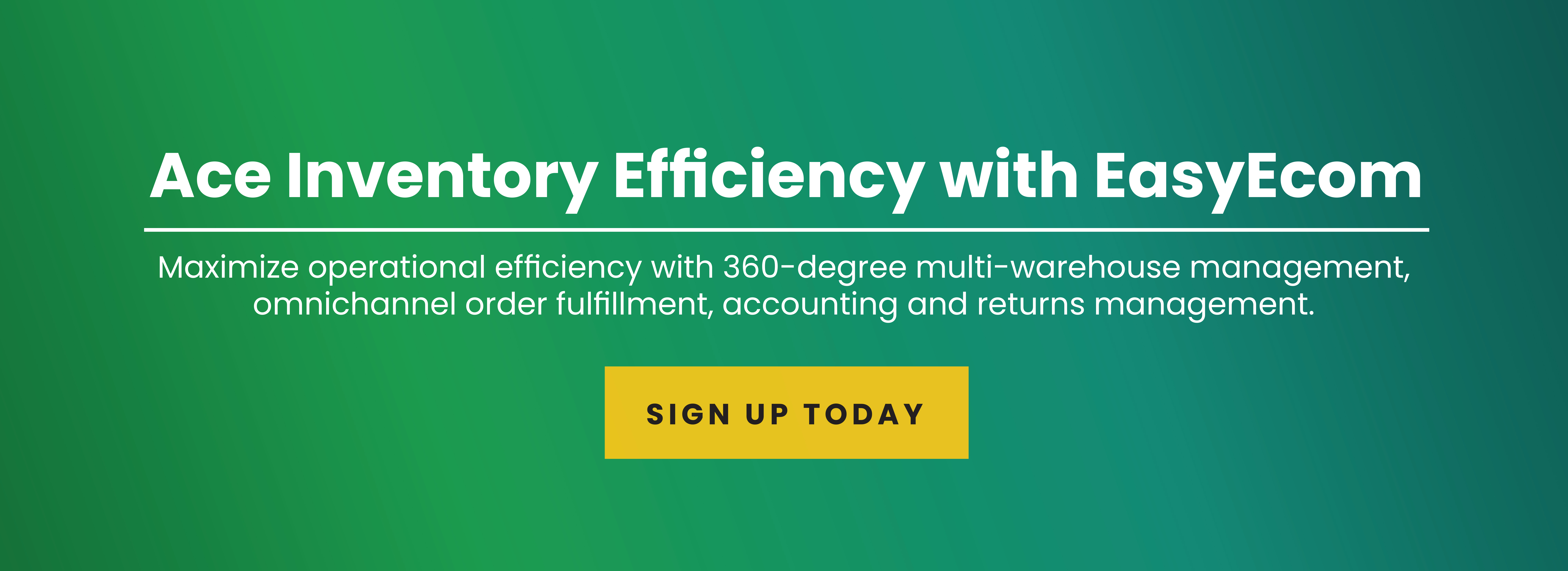Inventory management is hard enough without a seasonal inventory. If your business deals with goods that sell during a specific occasion or season, your inventory is said to be seasonal since it’s in high demand only during a certain occasion and/or time of the year.
In a seasonal inventory, you can never be too sure of product adequacy and whether some items in a particular product category will be more in demand than others. This creates challenges in maintaining stock levels, inventory control and warehouse management.
There are ways you can stay ahead of it though, which we’ll be going over in this post.
What is Seasonal Inventory?
Seasonal inventory refers to merchandise whose demand is contingent to the geography, event and/or season.
In India alone, inventory can be seasonal according to the location. For example, Raksha Bandhan or Gudi Padwa products will be in higher demand up north than in the south. The same may have no impact on inventory in countries where these events aren’t celebrated.
Seasonal merchandise can occur due to weather, traditions, population preferences and income. Let’s break it down a bit further;
- Weather seasonality: groceries are a prime example of products that are sold by their seasonal availability. If they’re off season, the price will be driven up to factor in import, storage conditions (i.e. cold storage for icecreams) and transportation costs. Their freshness can also be impacted en route which also plays a role in determining how many ultimately end up being bought.
- Traditional/ cultural seasonality: Cultural seasonality drives demand for certain materials and this can vary according to local customs (think of Christmas Eggnog, a traditional drink consumed in the West).
- Floating population: Cities or towns with a floating population will experience seasonality according to the influx of people. For instance, tourist seasons can drive up demand for souvenirs or local supplies such as hotel toiletries and bedding.
- Income availability: a seasonality comes in when income differs. It’s a well known fact that consumers are more likely to splurge on their payday which can either be at the beginning or end of the month.
Seasonal demand Examples
Examples of seasonal demand include
- Food items such as vegetables and fruits.
- Holiday-specific decor such as Christmas lighting, fake fir trees, Diwali clay lamps and lanterns.
- Weather-based sporting goods which will require you to stock up according to the weather forecasts.
- Seasonal outfits to accommodate fashion trends and wardrobe changes.
- Academic and office stationery supplies for term-time and office reopening.
- Gardening equipment for the four seasons.
Challenges Caused By Seasonal Inventory
Seasonal inventory poses challenges in maintaining stock levels. It complicates inventory reconciliation because fluctuations in demand skews the actual and recorded inventory. The two common challenges seasonal inventory causes
- Stock-Outs
Stock-outs occur when your inventory isn’t replenished on time when demand is high. Stockouts arise from any factor which include unfulfilled backorders, delays in receiving new batches from suppliers and poor shelving practices instore.
- Excessive Stock/Overstock
When demand is low, stocked items are retained in inventory. If the inventory doesn’t sell beyond 365 years, the stock converts from excessive to dead. Overstock is bad for fulfillment centers because a) it takes up space which could have stored a fast-selling or top-performing product and b) causes a profitability dip. The only way to offload the stock is to sell it at heavily discounted prices that will interest bargain hunters.
The best inventory management practices to deal with seasonality
- Forecast the inventory pipeline from history
An inventory management solution takes most of the guesswork out of forecasting your inventory. It runs the numbers on order aging, sales and return reports. You can apply filters to group products by SKU performance or revenue generated to see the relative change between months.
While it won’t completely eliminate seasonality, it will reduce the impact on warehouse load. The longer a product remains on the shelf, the more your expenses go up for storage. Forecasting the inventory pipeline from previous SKU performance reports can help you optimize your inventory. You’ll be able to establish the stock levels you need to maintain for seasonal merchandise.
- Diversify the product catalog
One of the best practices to deal with seasonal inventory is to diversify your catalog. Offer products that complement the existing line without competing with it directly. For example, if you sell cable knit sweaters, you could slip in thermal inner wear or a cap in matching colors to make the products fit together.
- Discount slow moving products
A seasonal inventory is the best way to offload slow-moving products. Slash your prices and put up clearance sales to attract more shoppers to make purchases.
- Explore international sales opportunities
Advertise seasonal gear to the overseas markets, especially those where the weather is the polar opposite of the region you're living in! For example, winter wear will sell better in Australia in the months of July and August than it would in the Middle East. You can rotate stocks internationally after factoring in the shipping costs, customs clearance and delivery times.
- Use demand forecasting
Demand forecasting can predict inventory levels by season. Use Google trends to determine if online trends are momentary or seasonal. You can compare these against your sales reports to foresee if the product will experience high or low demand. Demand planning can prevent stock outs or dead stock situations by adjusting the inventory.
Over to You
Although you can’t completely snuff out seasonality, you can shift from a firefighting approach to a more proactive stance. To this end, an inventory management and warehouse management platform can help sellers curate their pipeline with demand forecasting and planning. The data on historic performance and profitability reports can pinpoint which products are fast or slow-moving and position you to respond strategically.

.png)
.jpg)
.png)









